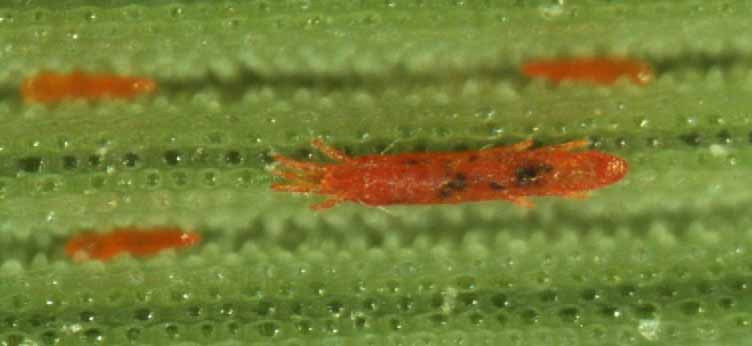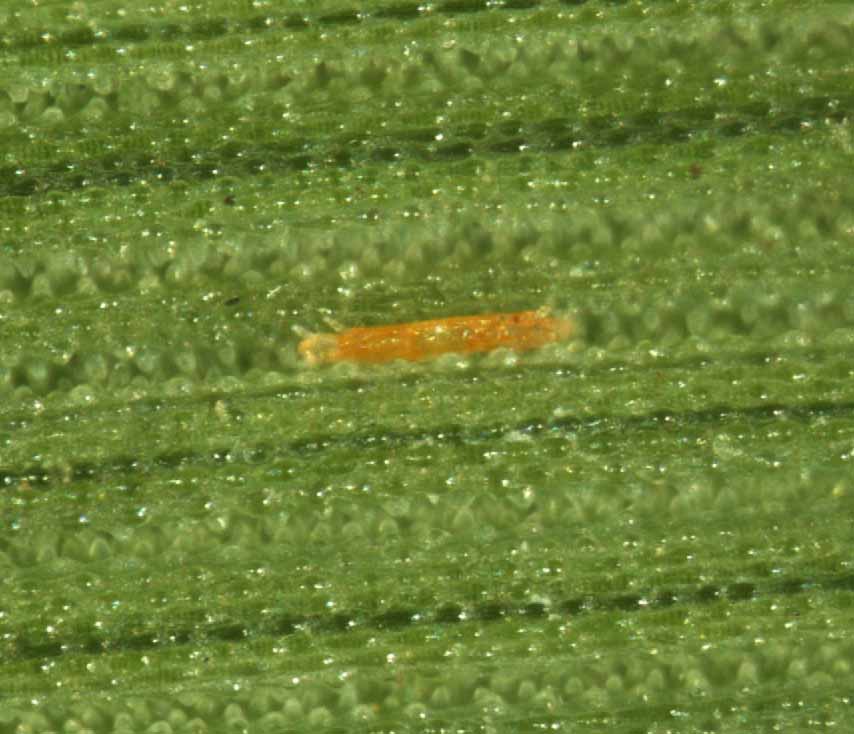Prolixus
|
Fig. 1. Prolixus forsteri female dorsum. |
|
Fig. 2. Prolixus corruginus female dorsum. |
|
Fig. 3. Prolixus sp. female live, with eggs laid within grooves in the leaf. |
|
Fig. 4. Prolixus sp. nymph live, wedged within a groove in the leaf. |
Key characters
- c1, c2, d2, e2 absent (Fig. 1)
- f2 present (Fig. 1) or absent (Fig. 2)
- h2
extremely elongate (Fig. 1) - elongate body, more than three times as long as wide
- anterior margin of prodorsum with small median projection or smoothly rounded
- ventral, genital and anal plates not developed
- 2 pairs ps setae
- 3 segmented palp
- dorsum with prodorsal shield evident
- ventral cuticle finely striate
Similar taxa
Acaricis - f2 present; palp 4-segmented; body not 3 X longer than wide
Cyperacarus - c1 present; e1, f3 absent; body not 3 X longer than wide
Gahniacarus - c1 present; e1 absent; body not 3 X longer than wide
Tenuipalpus - c1, f2 present/absent; palp 1-3 segmented; anterior margin of prodorsum with broad flat projection with median fork; body not 3 X longer than wide
Number of species
Two - P. corruginus, P. forsteri
Authority
Beard, Fan and Walter
Distribution
Australia
Hosts
Gahnia spp. (Cyperaceae)
Colour
- bright red to orange with alive (Figs. 3-4)
- eggs orange to red
Remarks
Individuals wedge themselves into grooves on underside of host leaf blades.
Eggs laid in grooves also (Fig. 3).





